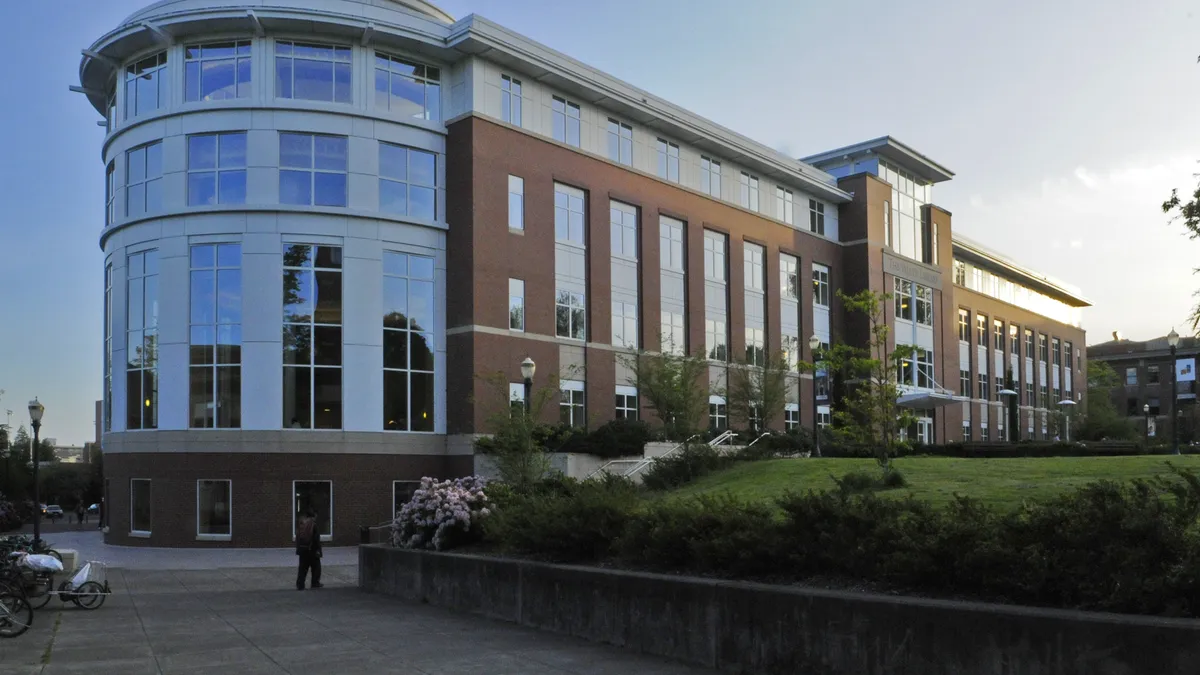Raul Burriel started seeing series of short video uploads by Oregon State University faculty years before the term "flipped classroom" started trending, along with the pedagogical technique. Now, nearly half of respondents in a new survey about the state of video in education by video platform provider Kaltura agree that the flipped model will become the norm in classroom instruction.
Burriel, an information technology consultant at Oregon State, said a number of faculty members have latched onto the flipped classroom technique — especially in the sciences. Chemistry instructors, in particular, have taken advantage of the technology to post short videos explaining scientific theorems or concepts, asking students to review them before a lab, where their time is spent not hearing lectures but actually experimenting with those concepts.
"The idea of distributing content in short little morsels has been around long before anyone coined the term 'flipped class,'" Burriel said.
Oregon State uses Kaltura for its video hosting services, tracking usage through a range of techniques offered by the company. Besides short videos obviously meant for flipped classrooms, instructors post longer videos of entire lectures for which Burriel notices a spike in viewing close to midterms or finals as students scramble to review concepts and material. Kaltura’s 2015 State of Video in Education Report, the result of a second annual online survey, included feedback from faculty identifying higher student performance when they make such lectures available.
While not surprising, the feedback from 1,200 respondents revealed overwhelming support of video use in education and acknowledgment that it is a powerful tool for improving student learning outcomes and content delivery. Students, of course, have greater comfort with the newer technology, but many faculty are getting on board.
Large lecture courses have functioned in much the same way for centuries. Long-time faculty can argue their techniques have served them well for their entire careers. But Burriel finds that, at Oregon State, new courses and programs being developed by earlier career professors are prime candidates for innovative models. In fact, he expects the field is on the verge of a major shift — not one in which video replaces traditional student-teacher interaction, but in which students expect and demand quality video to continue a tradition of learning in which they have been raised.
In K-12, Burriel points out, students are self-learning. “That’s something that hasn’t really picked up yet in higher education, but that K-12 generation is going to be hitting higher education really soon and institutions are going to have to adapt to that,” Burriel said.
Already, YouTube learning channels and educational apps are popular with younger generations, which turn to them over purely entertainment-based games. More video seems inevitable as educators strive to meet students where they are.
“It’s going to mean perhaps less time in the classroom listening to lectures, but probably more time doing, more time experimenting, more time in the laboratory,” Burriel said. “It’s just a different way of learning.”
While some ascribe to the view that quality video education could one day replace traditional teaching and learning, Burriel is not one of them. To him, it’s a matter of adaptation — adapting to new techniques, adapting to new learners. Just like educators have been doing all along.
Would you like to see more education news like this in your inbox on a daily basis? Subscribe to our Education Dive email newsletter! You may also want to read Education Dive's look at Kadenze's new MOOC platform for the creative arts.










